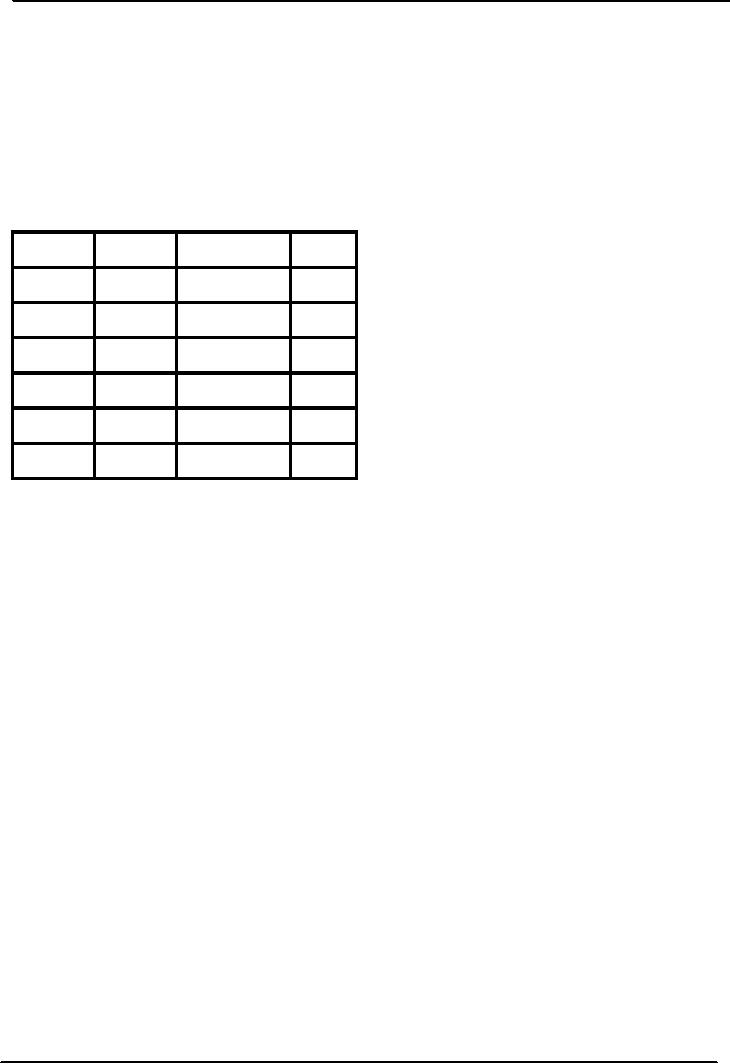 |
GROUPS IN COUNSELING:Humanistic Groups, Gestalt Groups |
| << GROUPS IN COUNSELING:Major benefits, Traditional & Historical Groups |
| MARRIAGE & FAMILY COUNSELING:Systems Theory, Postwar changes >> |

Theory
and Practice of Counseling -
PSY632
VU
Lesson
39
GROUPS
IN COUNSELING
Theoretical
Approaches
Psychoanalytic
Group Counseling
�
Members
of group often free
associate to each other
without therapist, report
dreams analyze
resistance
and transference of feelings
towards therapist and other
group members. Gives
improved
levels of self-expression and to the
development of heightened social
skills.
�
Focus
is still on free association,
transference of resistance and
working through.
�
The
experience gives deeper
analytic experience as individual
learns anxiety tolerance in group.
�
Wolf's
groups consist of eight to ten members
(equal males and female)
met for ninety
minutes
thrice
a week.
�
Counselor
tells the clients that it's a
problem of self understanding, learning
what unconscious
motives
excite us to behave.
�
Goals
of counseling are increased
satisfaction with one's self
and greater improvement in
social
behavior.
�
Finally
one may experience all
sorts of positive and
negative attitudes about one
another. Authority
and
intimacy may develop within a
group.
Transactional
Analysis
�
Goal
of TA therapy is to help people to relate to
others as adults.
�
Developed
by Eric Berne (1961)
�
Different
aspects of group members' interactions
are analyzed in TA.
�
Analysis
focus is on three chief ego
states within each person:
Child, Adult, and Parent.
People
sometimes
try to act toward others as
if they are that person's parent or
child, which creates
problems
in human interactions.
�
Other
aspect of emphasis is
games.
�
TA
is swift-moving, action oriented
approach.
Humanistic
Groups
Sensitivity
groups and encounter groups
are two types of group
therapy derived from the
humanistic
approach.
Gestalt
Groups
�
Oriented
towards experience of the individual
patient.
�
Bits
of role playing.
�
Reporting
the dreams is also
important.
�
Dialogue
between patients is
emphasized.
�
Hot
seat approach patients
are asked to experience
their feelings and behavior
to lose their minds
and
find their senses.
Other
members may be asked to
participate.
167

Theory
and Practice of Counseling -
PSY632
VU
Behavioral
Groups
Behavior
groups are used to conduct
desensitization sessions, model interpersonal
skills, or use
cognitive
restructuring
interventions in groups. Groups
are usually time limited
with same clients and
clients learn
assertiveness
and self expression.
Rating
of Theory Strength at Three Group
Levels (Ward,
1982)
Below
is illustrated a model for the more effective
use of theory in group work
as well as the theory
strengths
of various approaches:.
Theory
Individual
Inter-personal Group
Freud
Strong
Weak
Weak
Perls
Strong
Weak
Weak
Behavioral
Strong
Weak
Weak
Ellis
Strong
Medium
Weak
Berne
Strong
Strong
Weak
Rogers
Strong
Medium
Medium
Issues
in Groups
�
Selection
and preparation of group
members
�
Group
size and duration
Groups
consist of five to ten patients;
Sessions are at least once a
week for 90 minutes
to
o
two
hours.
�
Open
versus closed groups
Open
group admits new members
but closed group
doesn't.
o
�
Confidentiality
�
Physical
structure
Counselor
sees all group members
concurrently on individual basis or only
at group
o
therapy
meetings. Some counselors
use heterogeneous group
while others use
homogeneous.
People are often seated in
circle, or around table. Both
heterogeneous and
homogeneous
groups are suggested.
�
Co-leaders
Co-leaders
are usually beneficial when new
counselors organize groups.
They can have
o
some
experienced co-leader. They
are also beneficial when there
are more than 10 people
in
the group. Usually group leaders sit
opposite to each other.
�
Self-disclosure
Self-disclosure
is dependent on mutual trust.
o
168

Theory
and Practice of Counseling -
PSY632
VU
�
Feedback
Feedback
is the most important and
abused part. The appropriate timing of
feedback is at
o
the
end of a session or before termination.
The feedback should be clear,
concise and
concrete
it shall be beneficial for the receiver
and not serve the needs of
the giver.
�
Follow-up
Follow-up
is appropriate after 3 months according to
Corey.
o
Stages
of Groups
�
Forming
Foundation
is laid down in the forming
stage. It is similar to infancy period,
when infant is
o
dependent
and faces anxiety.
�
Storming
Like
adolescence, group members
seek to establish themselves in
group hierarchy
o
�
Norming
It
refers to the period of group
cohesion. It is similar to young adulthood,
when people
o
have
survived the storm.
�
Performing
Like
adults, people perform productively at
this stage.
o
�
Adjourning/
Mourning
This
is the good-bye time when members feel either
fulfilled or bitter.
o
The
Curative Factors
Yalom(1975)
specified a set of curative
factors in a group
setting:
�
Imparting
information.
Information
giving occurs through
didactic instruction. Psychoeducation
occurs explicitly
through
therapist
but also comes from
other members
Instruction
from members: not the
content that is relevant but the
process
�
Instilling
hope.
Hope
is required to keep the client in
counseling and faith in the treatment.
This is therapeutically
effective
and can be given as pre-group
orientation.
�
Universality.
Clients
initially feel unique, however, group
approach allows them to learn
that others have
similar
problems;
"top secret task"
�
Altruism.
Patients
receive altruism through
giving.
�
Interpersonal
learning.
Is
one of the primary mechanisms of
change.
�
Development
of Socializing Techniques: present
in all groups but the nature
of the skills and the
process
of
teaching varies
�
Imitative
behavior.
Therapists
model certain behaviors; is also
possible through role
playing
169

Theory
and Practice of Counseling -
PSY632
VU
�
Corrective
recapitulation of the family
group.
Group
resembles a family; members
will interact with others in
modes that are reminiscent
of the
way
they once acted with
siblings and parents; fixed
roles are explored and
challenged in the group.
Corrective
recapitulation of primary family in group
context can help clients
understand and
resolve
problems related to family. Corrective
emotional experience: expose
patient under favorable
conditions
to emotional situations that
he/she could not handle in the
past
�
Catharsis.
A
necessary but not sufficient
condition for therapeutic change; the
feelings behind the
catharsis
are
more relevant.
�
Group
cohesiveness.
Refers
to condition of members feeling warmth
and comfort in the group, belonging,
valuing the
group
and feeling they are valued
and unconditionally supported and
accepted by other
members.
170
Table of Contents:
- INTRODUCTION:Counseling Journals, Definitions of Counseling
- HISTORICAL BACKGROUND COUNSELING & PSYCHOTHERAPY
- HISTORICAL BACKGROUND 1900-1909:Frank Parson, Psychopathic Hospitals
- HISTORICAL BACKGROUND:Recent Trends in Counseling
- GOALS & ACTIVITIES GOALS OF COUNSELING:Facilitating Behavior Change
- ETHICAL & LEGAL ISSUES IN COUNSELING:Development of Codes
- ETHICAL & LEGAL ISSUES IN COUNSELING:Keeping Relationships Professional
- EFFECTIVE COUNSELOR:Personal Characteristics Model
- EFFECTIVE COUNSELOR:Humanism, People Orientation, Intellectual Curiosity
- EFFECTIVE COUNSELOR:Cultural Bias in Theory and Practice, Stress and Burnout
- COUNSELING SKILLS:Microskills, Body Language & Movement, Paralinguistics
- COUNSELING SKILLS COUNSELOR’S NONVERBAL COMMUNICATION:Use of Space
- COUNSELING SKILLS HINTS TO MAINTAIN CONGRUENCE:
- LISTENING & UNDERSTANDING SKILLS:Barriers to an Accepting Attitude
- LISTENING & UNDERSTANDING SKILLS:Suggestive Questions,
- LISTENING & UNDERSTANDING SKILLS:Tips for Paraphrasing, Summarizing Skills
- INFLUENCING SKILLS:Basic Listening Sequence (BLS), Interpretation/ Reframing
- FOCUSING & CHALLENGING SKILLS:Focused and Selective Attention, Family focus
- COUNSELING PROCESS:Link to the Previous Lecture
- COUNSELING PROCESS:The Initial Session, Counselor-initiated, Advice Giving
- COUNSELING PROCESS:Transference & Counter-transference
- THEORY IN THE PRACTICE OF COUNSELING:Timing of Termination
- PSYCHOANALYTIC APPROACHES TO COUNSELING:View of Human Nature
- CLASSICAL PSYCHOANALYTIC APPROACH:Psychic Determination, Anxiety
- NEO-FREUDIANS:Strengths, Weaknesses, NEO-FREUDIANS, Family Constellation
- NEO-FREUDIANS:Task setting, Composition of Personality, The Shadow
- NEO-FREUDIANS:Ten Neurotic Needs, Modes of Experiencing
- CLIENT-CENTERED APPROACH:Background of his approach, Techniques
- GESTALT THERAPY:Fritz Perls, Causes of Human Difficulties
- GESTALT THERAPY:Role of the Counselor, Assessment
- EXISTENTIAL THERAPY:Rollo May, Role of Counselor, Logotherapy
- COGNITIVE APPROACHES TO COUNSELING:Stress-Inoculation Therapy
- COGNITIVE APPROACHES TO COUNSELING:Role of the Counselor
- TRANSACTIONAL ANALYSIS:Eric Berne, The child ego state, Transactional Analysis
- BEHAVIORAL APPROACHES:Respondent Learning, Social Learning Theory
- BEHAVIORAL APPROACHES:Use of reinforcers, Maintenance, Extinction
- REALITY THERAPY:Role of the Counselor, Strengths, Limitations
- GROUPS IN COUNSELING:Major benefits, Traditional & Historical Groups
- GROUPS IN COUNSELING:Humanistic Groups, Gestalt Groups
- MARRIAGE & FAMILY COUNSELING:Systems Theory, Postwar changes
- MARRIAGE & FAMILY COUNSELING:Concepts Related to Circular Causality
- CAREER COUNSELING:Situational Approaches, Decision Theory
- COMMUNITY COUNSELING & CONSULTING:Community Counseling
- DIAGNOSIS & ASSESSMENT:Assessment Techniques, Observation
- FINAL OVERVIEW:Ethical issues, Influencing skills, Counseling Approaches